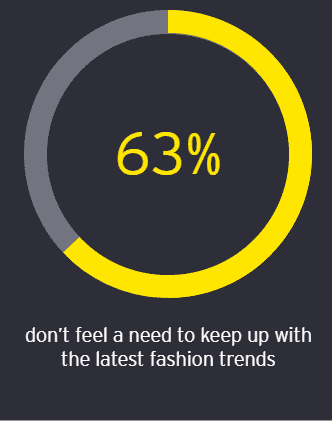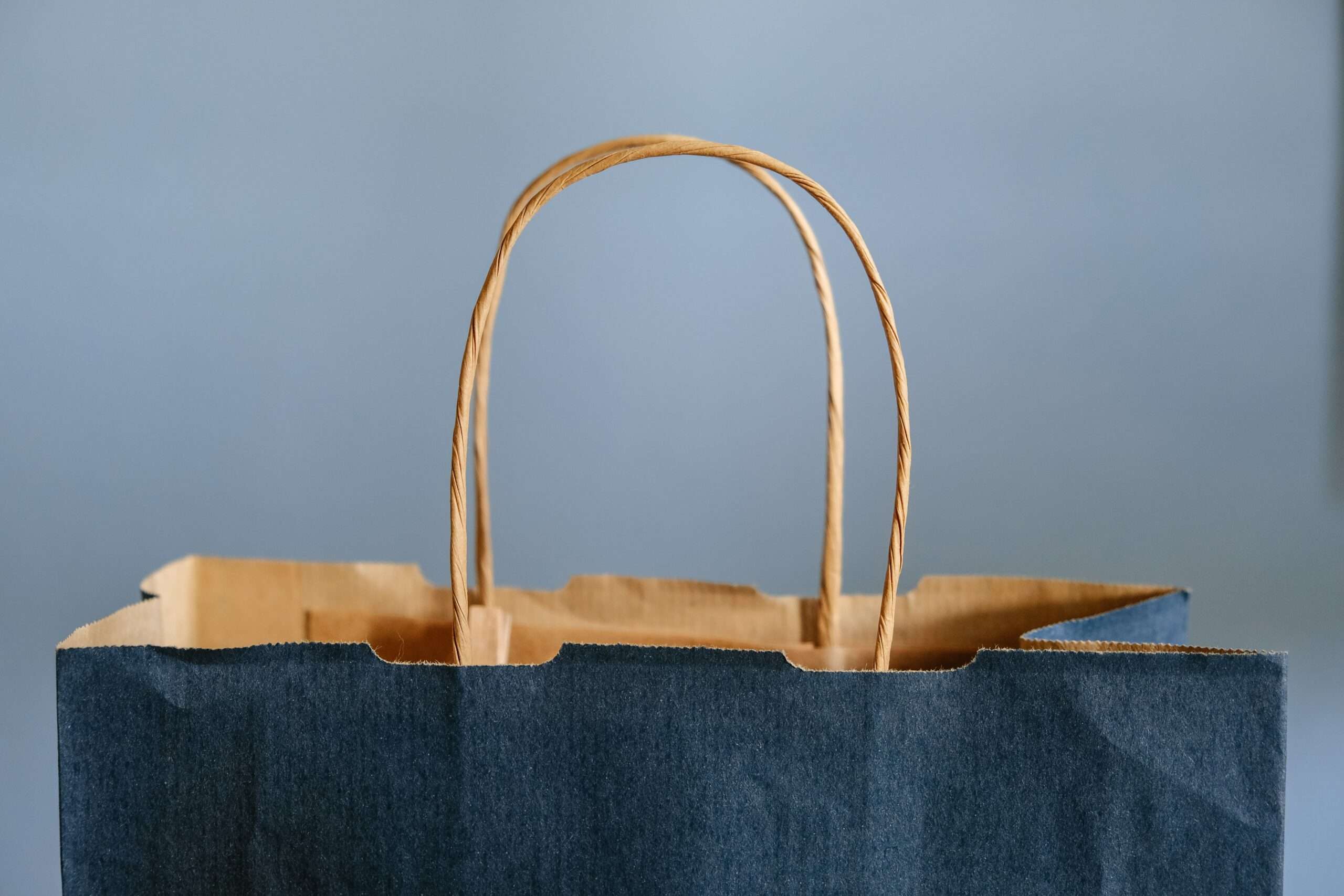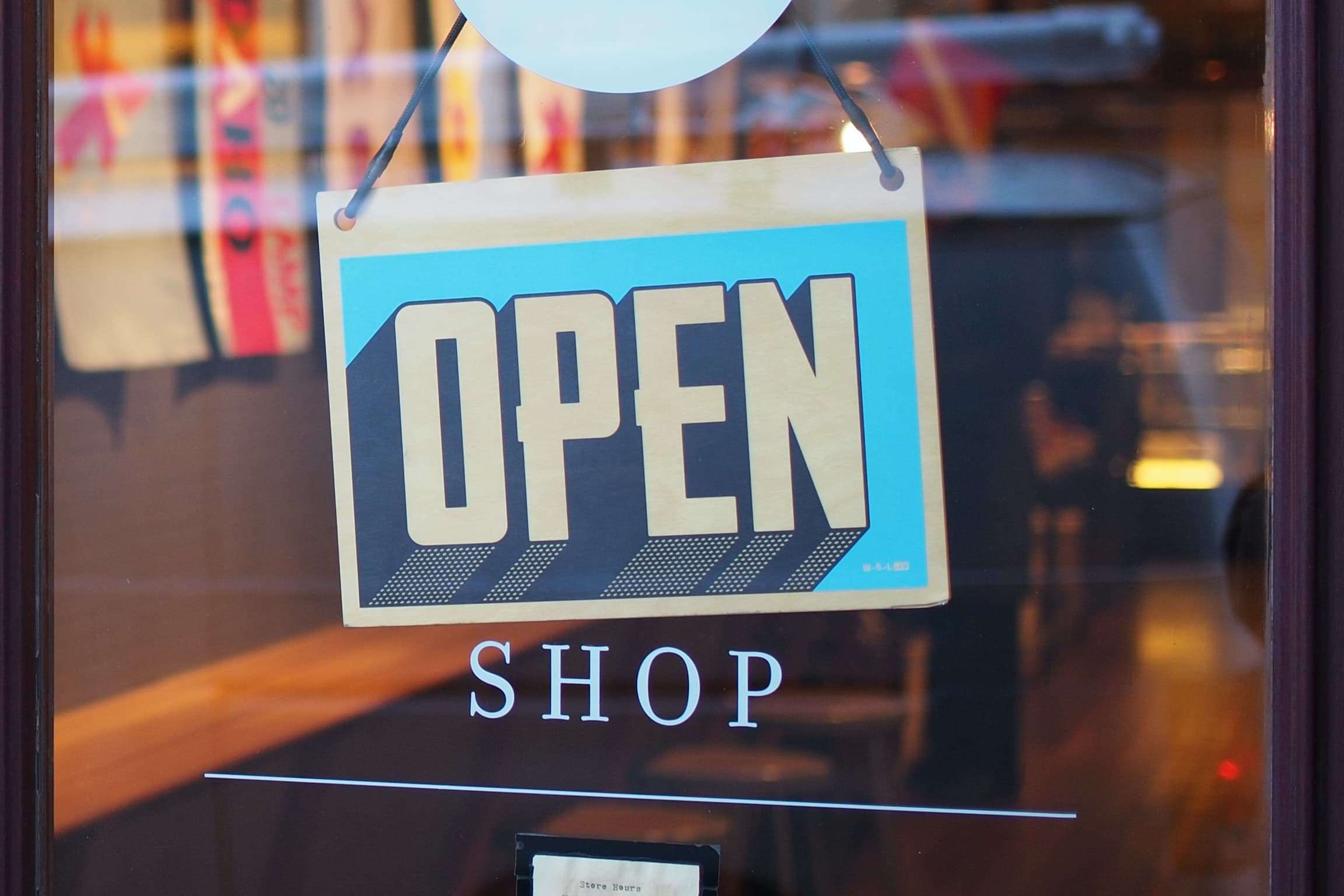By understanding what’s driving the evolution of consumer consumption, you can identify growth opportunities and adapt your business.
- Multiple drivers of change are shaping new consumption patterns as people buy less, buy better and buy in different ways.
- Consumption is essential for economic growth, but as consumers prioritize experiences and digital products over physical goods, businesses will need to adapt.
- Companies must understand what’s driving change, how it will impact what they sell and do, and what success looks like in the future.
The consumer is truly king. Not just in the store but driving economic growth – consumer spending accounts for more than half (60%) of global GDP.1 When consumers spend, the economy grows; and when they don’t, it shrinks. Even in a recession, we invariably find a way to spend ourselves back to growth – the levers used are almost always based on encouraging people to buy more stuff through cheaper debt and increased wages.
Governments and companies rely on consumer spending as a foundational building block of the global economy and society. It’s become an accepted principle that progress is measured through growth and growth is driven by consumption. Companies are measured by how much they can grow revenues and margins; national economies are measured by how much they can grow GDP. With consumer spending essential to both, changes in consumer values and spending behavior have a critical impact on their success.
The experience of two years of lockdowns has had a lasting effect on consumer priorities. According to the Future Consumer Index, which surveys over 21,000 consumers in 27 countries, 54% of consumers have seen changes in their values and the way that they look at life. By learning to live with less, many consumers have come to adopt simpler and less consumerist values. Technology platforms and new business models are enabling this with a growing number of reselling, rental and repair services allowing consumers to moderate their consumption without compromising their lifestyles. These changes in consumer priorities now need to be factored in.
Anticipating the Future Consumer
Percentage of consumers who …
A table showing different ways consumers are buying less and better, but not more. For example, 67% of consumers now try to repair things rather than replace them and 63% don’t feel a need to keep up with the latest fashion trends.
At the same time, the relentless pursuit of growth is increasingly coming under scrutiny. Concerns over sustainability have raised questions on the social and environmental costs that economic growth can have. Current macroeconomic volatility is also adding pressure to consumption as well as rising interest rates and persistently higher than normal levels of inflation. They’re all dampening the appetite to spend our way out of a crisis with the potential to also redefine what growth looks like and how to measure it.
The FutureConsumer.Now program takes a future-back approach with clients, sector experts and futurists to develop possible scenarios that could shape new consumer behaviors and transform the way that brands and retailers serve them in 2030 and beyond. To stress test these concepts we have developed over 200 drivers of change that collectively establish the trends that will shape future perceptions of consumption, growth and success. They span more than just changes in the composition and volume of consumption; the drivers explore considerations that range from autonomous vehicles to biomimicry. Some drivers are already in mainstream adoption while others remain distinct outliers, but there are clear signals from this research that point to changes in the way consumption is evolving, what will constitute growth and how businesses may need to rethink the measures of future success in the KPIs they set.
Chapter 1 – What’s Driving a Change in Consumption?
Discover the drivers of change reshaping consumer values and buying behaviours.
For many decades, consumption growth has come from encouraging people to consume more. New product launches, seasonal fashion, increased portion sizes and endless aisles of choice have collectively supported growth in consumer spending. But there are now signs of fatigue, and brands must reconsider their value proposition to encourage people to consume better, not more.
Let’s not signal the death knell of consumption just yet. People need to eat and drink, although they might buy food and drink in different ways. They need to wear clothes, though they may not always choose to own or buy as many of them. They will still have hopes and aspirations that depend on goods and services, although these may be less focused on physical items. Private consumption will remain significant in any measure of economic activity. But what consumption is comprised of is evolving.
From the 200-plus drivers of change that we’ve identified and explored, dozens point to changing modes of consumption, and five in particular may change consumption patterns long term.
Five Drivers that Could Reshape Consumption Patterns
Household sizes are shrinking as single-person and single-parent households grow. Longer lifespans, declining fertility rates and children living at home for longer are also evolving household composition, driving new consumption patterns in the volume and types of products bought.
As conspicuous consumption peaks, spending on products will reach a saturation point, reducing the value of physical goods to the consumer. Instead, discretionary spending will shift toward experiences that enrich consumer lifestyles.
Pressure is mounting on companies and consumers to repair and upgrade products rather than replace them. As “planned obsolescence” gives way to “right to repair,” the frequency of new product launches will shrink, and repair or enhancement services will generate new revenue streams.
The need to own or access physical goods and services is diminishing as more time is spent online. While many essential and discretionary needs will remain physical, digital products and services are growing their share of wallet, creating new opportunities for innovation and value creation.
Consumers will become increasingly aware of the wider impact of the goods and services they consume, both on people and the planet. Greater visibility of product information will influence the choices they make.
Three perspectives on change for consumer-facing companies
Learnings from the Future Consumer Index coupled with insights from our drivers of change point to three key ways that consumption patterns will evolve in the coming years:
1. Physical products will decline as a proportion of overall consumption
Experiences, digital products and longer product life cycles will drive down the overall volume of physical products needed. Share of wallet is moving toward less-tangible consumables such as experiences, repair services to keep products in circulation longer, or virtual goods and services that are traded in online economies.
2. Basket and product sizes will change for asset-light lifestyles
Less will be more in a future landscape where frugality confers status, everything can be rented or subscribed to, and changing household sizes dictate how much people choose to buy. Bulk buying will be less prominent as single-person households increase in number, while buying “better, not more” and renting the rest will become more common as consumers rethink whether they need to fill the limited space in their lives with possessions they don’t need to own.
3. Consumer choices will be enabled by simplicity and transparency
Artificial Intelligence (AI) will increasingly allow consumers to cut through complexity, enabling purchase decisions framed by seamless convenience as much as price. But consumers will also make considered choices that reflect the impact of those choices in areas that matter to them. They may give little thought to the delivery of everyday essentials, as long as the goods meet price and purpose expectations. Consumers will, however, spend their time and money on the products and services they truly care about.
Chapter 2 – What Will Influence Drivers of Growth?
As business adapts to shifts in consumer spending, what drives growth and progress will change.
If the fundamentals of consumption are evolving, then so too will the metrics used to measure progress and growth. National and corporate models apply tried-and-tested financial indicators as a bellwether for the health of an economy (such as GDP, growth and debt), or for a company (such as revenues, growth and profitability). Progress is defined by growth, a robust GDP or revenue growth — all signal that things are going in the right direction or, when they decline, start alarm bells ringing. But how important will growth be in the future? Pressure is mounting from some quarters to transition national development indicators from financial metrics to a “wellbeing economy,” which uses the health of people and the planet as a measurement of success.
There has always been a correlation between wealth and wellbeing. Focusing development on the latter rather than simply assuming the former delivers it would be a step change in how economies develop. This is increasingly being reflected in how company strategies evolve. Environment, social and governance (ESG) factors are taking a greater role in shaping investment decisions. Social or environmental goals are often reported in tandem with financial ones, leading to a rising number of companies aspiring to gain B-Corp status.
When a consumer company presents its quarterly financial results, it will typically use the platform to also discuss its priorities on plastic waste, Scope 3 emissions, consumer wellness, and diversity and inclusion. That’s if a consumer company wants to share quarterly results at all.
Over the last decade, many have opted out of quarterly reporting because it puts too much scrutiny on short-term financial goals and not enough on long-term value creation. As with changing consumption patterns, there are dozens of drivers of change that could reshape perceptions of growth and progress.
Five Drivers that Could Reshape Perceptions of Growth
Resource scarcity is pushing innovation and investment into untapped, abundant resources. Renewable energy, data proliferation, alternative food sources and emerging tech will create new opportunities, drive down associated costs and deliver a fresh wave of products and services.
Consumers are spending more time and money online, giving rise to parallel digital economies that are growing in number, size and complexity. This will lead to new avenues of value creation using digital currencies or assets that are convertible between physical and virtual worlds.
A focus on using financial growth and wealth to measure progress and development is giving way to alternative metrics that deliver better social and environmental outcomes. Pressure is mounting to shift indicators like GDP toward those that improve the wellbeing of people and planet.
Algorithms tracking factors such as public behavior, shopping habits, media use and credit history can generate holistic scores reflecting the social value of citizens and businesses. Increasing adoption of these scores will dictate access to privileges like finance, travel and healthcare.
The gap between companies and governments is closing as corporations use assets and infrastructure for services traditionally associated with the public sector such as using social media for emergency communications, on social media, taking back and recycling waste, or providing education or healthcare.
Implications for Consumer Facing Companies – Rethinking What Creates Value
The above drivers demonstrate that measuring financial growth may no longer be enough. The scarcity of some resources and a growing abundance of others will shift value creation, for example, away from physical and toward virtual economies. Non-financial priorities will push up the agenda the impact on time, people and the planet at the expense of hard currency. National agendas will merge environmental and citizen welfare with financial stability and economic expansion. Shrinking population growth will undermine the demographic dividend that has supported economic progress for centuries, while automation could reduce working hours and create an imperative for new welfare measures. This is likely to also blur the boundaries between corporations and policymakers.
The license to operate a company enjoys will depend as much on its ability to generate positive social and environmental outcomes as its ability to generate profit and growth.
Chapter 3 – How Rethinking What Good Looks Like Will Reshape Business
What we recognise as success and how we measure progress will reshape business, its impact on the economy and contribution to society.
As consumer companies adapt to thrive in this changing environment, they will need to revisit their strategies, business models and operational structures to ensure they are relevant to the definitions of value that are emerging. The changes companies must plan for won’t happen overnight. The 200-plus drivers we’ve identified range from trends that are already well underway to those that may take decades to have a business impact. Other drivers such as Transhumanism (the potential to rapidly extend lifespans through health and life science innovations) or The Singularity (where AI and technology enable the integration of humans and machines) are outliers that may never come to pass but will be hugely disruptive if they do. However, trends we’re seeing today illustrate some substantive changes in how consumer companies will create and measure success.
Five Drivers that Could Reshape Measures of Success
Community platforms, online marketplaces, social selling and agile payment solutions are driving rapid growth in peer-to-peer activities. This is enabling a parallel sharing economy where consumers can sell, buy, barter, exchange or gift goods and services independently.
Algorithms can already optimize prices in real time for commercial impact but there is growing demand for “true prices” to reflect social, environmental and health factors. As data quality and analytics tools improve, product pricing could become personalized to individual profiles.
Health is becoming a status symbol as consumers use exercise, athleisure clothing, healthier diets and wellness retreats to advertise lifestyles that focus on wellbeing rather than wealth.
Interactive media has led to a wave of user-generated content through social influencers and crowdsourcing. Open-source tools, 3D printing and fewer intellectual property restrictions could allow consumers to co-design, build, sell and share in the value of products and services with brands.
AI and automation will increasingly deliver optimized insights that help guide operational and strategic direction. This could ultimately reshape functional roles within boardrooms as corporate leaders delegate certain decisions and make choices based on data rather than instinct.
Chapter 4 – If You Can Imagine the Future, You Can Shape It
Nobody can predict the future, but by imagining it, you can identify opportunities and choose to shape your own picture.
In a world where development and success have definitions that lie beyond growth and money, companies will need to adapt. However, there will be opportunities to explore. By understanding what has the potential to change consumer expectations and behavior, businesses will be able to shape their own future.
1. Creating New Value Pools
Some of these will continue to deliver revenue and margin, but others will contribute in other ways, creating a more holistic vision of what “good” looks like. Healthy financial balance sheets alone won’t generate the value a company needs to win in the market, especially if they come at the expense of other factors. A company won’t be measured just on how much it sells a product for or how many it sells, but what services it can enable, what impact it has and what values or communities it can support.
2. Meeting Needs in New Ways
Technology will enable consumer companies to do more for less by scaling AI, unlocking new manufacturing techniques and efficient operating constructs to deliver personalization at lower cost and resource use. Meeting consumer expectations will drive a shift toward service-based models that span different categories and sectors, enabling consumers to share in value creation through peer-to-peer selling and brand collaboration. These will be underpinned by a new corporate purpose that meets expectations on wellbeing and impact by assessing the real cost and benefits beyond those measured in dollars and cents.
3. Rethinking Contribution and Impact
Retailers may be valued as much for their role in the community, their contributions to employee wellbeing, or the insights and data they share back to brands as they are for revenue their stores generate. Consumer products companies may find that success hinges as much on their ability to improve consumer health or address systemic environmental issues, as it does on their ability to sell products to people.
Looking at Long-Term Value
All of these factors point to one business driver that will rule them all: Long-term value. Intangible assets are becoming more visible as drivers of value, with social and environmental KPIs joining financial metrics. As connectivity increases the awareness and influence of stakeholders, new definitions of success will challenge the prioritization of growth or margin.
Today growth and margin are seen as indicative factors in the relative success that consumer companies have in delivering to the needs of the market. Tomorrow companies will be directly accountable for how they deliver to the needs of people and the planet. The success companies enjoy in the market will depend on those factors

 1.0
1.0 



























